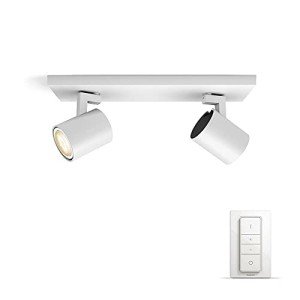Contemporary Lighting in the UK: Transforming Spaces with Illumination
Lighting plays a crucial function in specifying the atmosphere and functionality of any space. In the UK, contemporary lighting has actually become a substantial design aspect, using ingenious options that mix looks with usefulness. This post delves into the various styles, materials, and innovations forming contemporary lighting, along with pointers for choosing the most suitable fixtures for numerous settings.
The Evolution of Contemporary Lighting
Contemporary lighting in the UK reflects the changing tastes and technological advancements in design. It encapsulates a wide variety of designs, consisting of:
- Minimalist: Characterized by simplicity and clean lines, minimalist lighting fixtures focus on kind and function without unneeded decorations.
- Industrial: Inspired by urban settings, industrial lighting integrates basic materials like metals and woods with strong designs, developing edgy, practical pieces.
- Scandinavian: Known for its warmth and simpleness, Scandinavian lighting typically features soft colors and natural products, focusing on producing a comfortable atmosphere.
- Smart Lighting: This modern pattern integrates technology with design, permitting users to manage their lighting with mobile apps, voice commands, or automation systems.
To illustrate the advancement and variety in the field of contemporary lighting, think about the table listed below, which highlights essential qualities of various styles.
| Design | Key Characteristics | Popular Materials | Ideal Spaces |
|---|---|---|---|
| Minimalist | Easy, functional designs | Metal, glass, wood | Modern homes, offices |
| Industrial | Raw, unfinished appearance | Steel, concrete, wood | Lofts, galleries |
| Scandinavian | Relaxing, warm aesthetic appeals | Natural fibers, light wood | Living spaces, coffee shops |
| Smart | Integrated innovation, automation | Differs commonly | Residences, offices, retail areas |
Choosing Contemporary Lighting Fixtures
Selecting the ideal lighting fixtures for a space needs mindful factor to consider of numerous aspects. Here are crucial elements to bear in mind:
1. Purpose of the Space
Before choosing fixtures, consider the designated use of the location. Various functions need different kinds of lighting:
- Task Lighting: Focused lighting for activities such as reading, cooking, or studying. Examples consist of table lamps and under-cabinet lights.
- Ambient Lighting: General lighting that provides total illumination. Ceiling lights and pendant fixtures fall under this category.
- Accent Lighting: Designed to highlight particular functions or areas, such as artwork or architectural details. Wall sconces and mounted lights are common choices.
2. Style and Theme
The lighting should complement the existing decoration. Choose fixtures that match or boost the total theme of the space, whether it's contemporary, rustic, or diverse.
3. Size and Scale
Think about the proportion of the lighting fixtures relative to the space. A large chandelier might look sensational above a spacious table, while smaller sized pendant easy work well in compact settings.
4. Energy Efficiency
With increasing energy expenses and environmental concerns, choosing energy-efficient lighting alternatives is important. LED lights are an excellent choice, offering durability and lower energy intake.
5. Versatility
In modern style, versatility is crucial. Fixtures that can be adjusted or repositioned improve functionality, enabling users to create different atmospheres as required.
Popular Contemporary Lighting Brands in the UK
The contemporary lighting market in the UK boasts many brand names known for their ingenious styles and quality craftsmanship. Some noteworthy discusses include:
- FLOS: An Italian brand commemorated for its artistic and iconic lighting fixtures that frequently double as art pieces.
- Tom Dixon: A British designer recognized for his modern, industrial designs that perfectly include metal and light.
- Anglepoise: Known for its flexible, practical lamps, perfect for a variety of settings from office to creative studios.
- John Lewis: Offers a range of contemporary lighting solutions that accommodate a wider audience, including affordable yet elegant options.
Frequently Asked Questions about Contemporary Lighting in the UK
1. What is contemporary lighting?
Contemporary lighting describes lighting styles and fixtures that reflect current style trends, frequently identified by tidy lines, innovative shapes, and making use of modern materials and innovations.
2. How do I pick the best lighting for my home?
Think about the purpose of the room, existing decoration, size of fixtures, energy performance, and flexibility. Buy Bedroom Lighting UK how each piece will contribute to the overall atmosphere and functionality of your area.
3. What are some energy-efficient lighting choices readily available in the UK?
LED lights are the most prominent energy-efficient choice, understood for their long lifespan and low energy usage. Compact fluorescent lights (CFLs) and halogen bulbs are other alternatives.
4. Where can I look for contemporary lighting in the UK?
Contemporary lighting can be found in different retail outlets, both online and in physical stores. Noteworthy merchants consist of John Lewis, Habitat, and specialized lighting shops.
5. Can contemporary lighting work in traditional areas?
Definitely! Contemporary lighting can improve traditional spaces when chosen thoughtfully. Selecting fixtures with a balance between modern and timeless components can produce a harmonious style.
Contemporary lighting in the UK represents more than just lighting; it embodies design innovation and imagination, transforming areas and improving performance. As patterns continue to progress, homeowners and designers alike can explore an extensive variety of styles and innovations, making sure that every room bursts with life, warmth, and character. By thinking about the necessary elements detailed in this post, one can curate a collection of lighting fixtures that resonates with individual design and meets practical needs, eventually shaping comfortable and visually attractive environments.

